


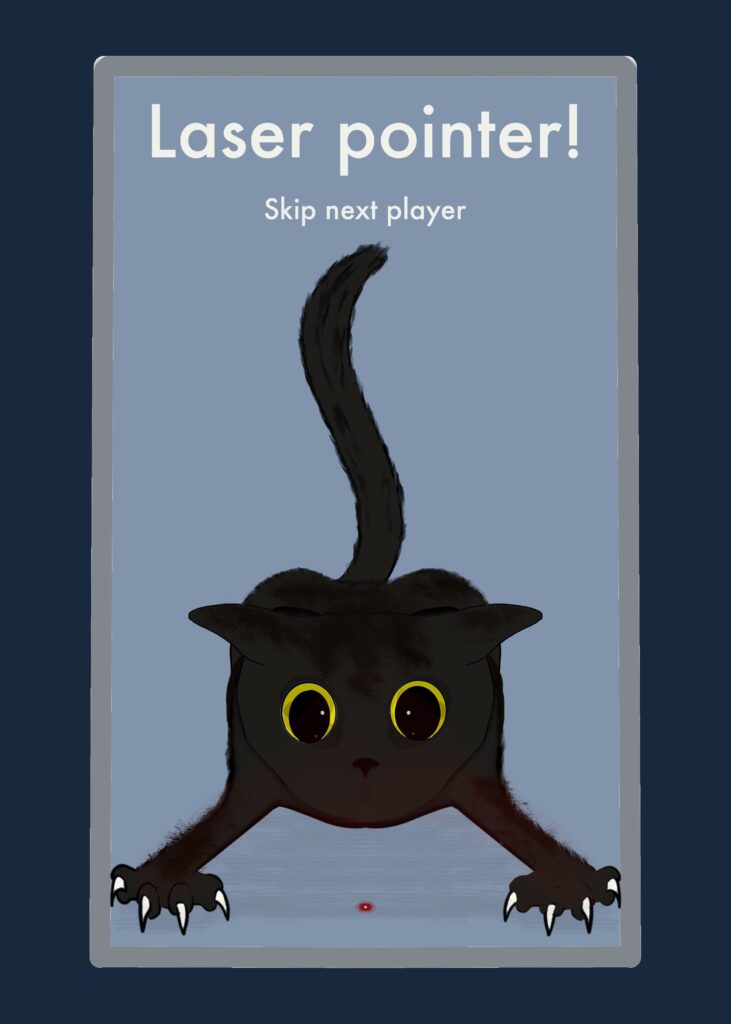
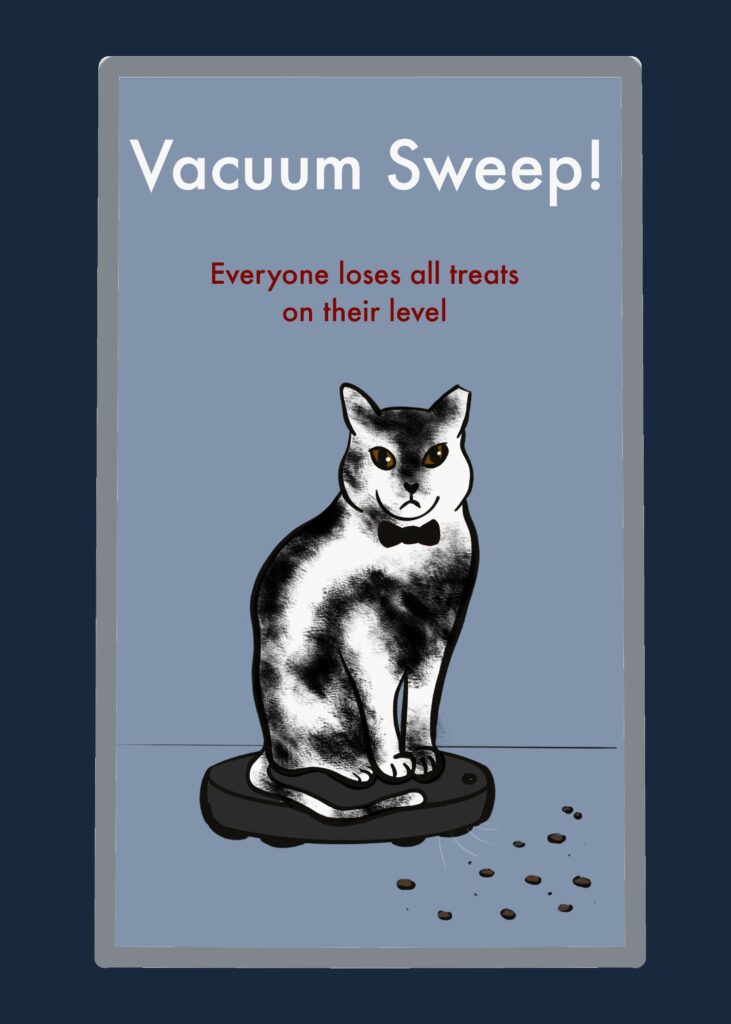
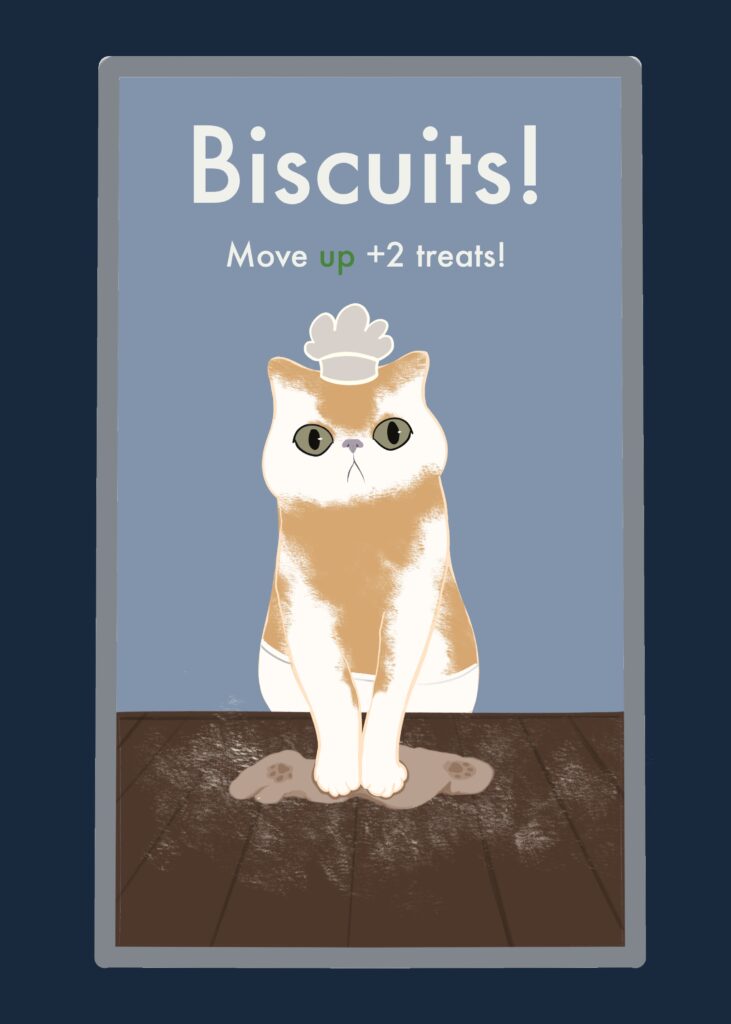
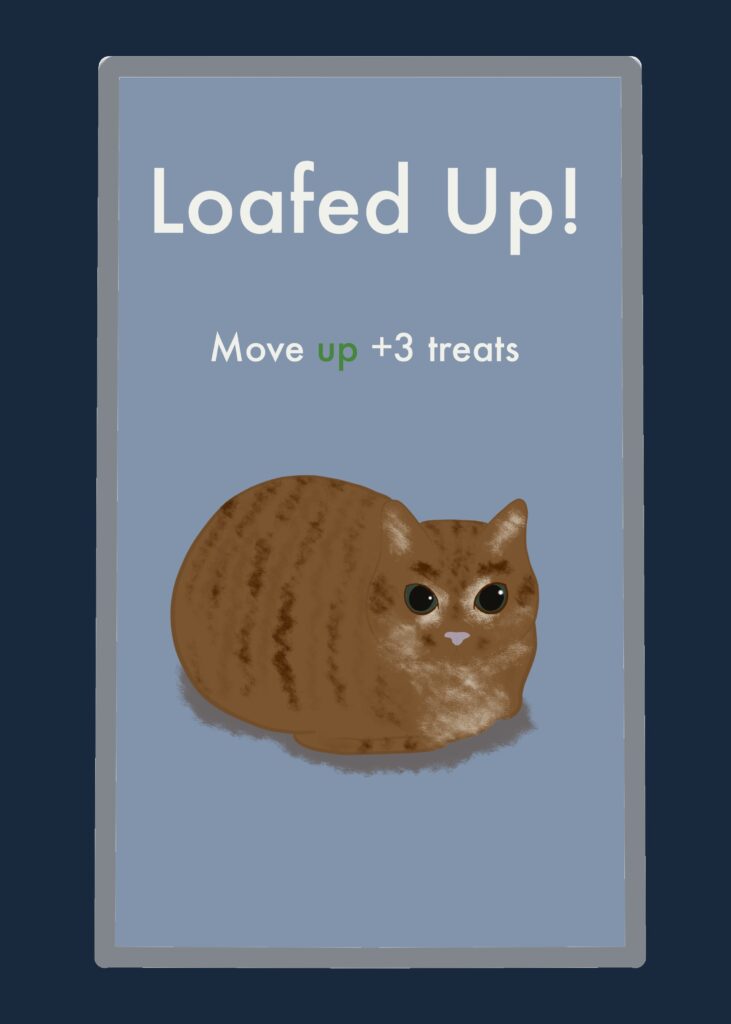

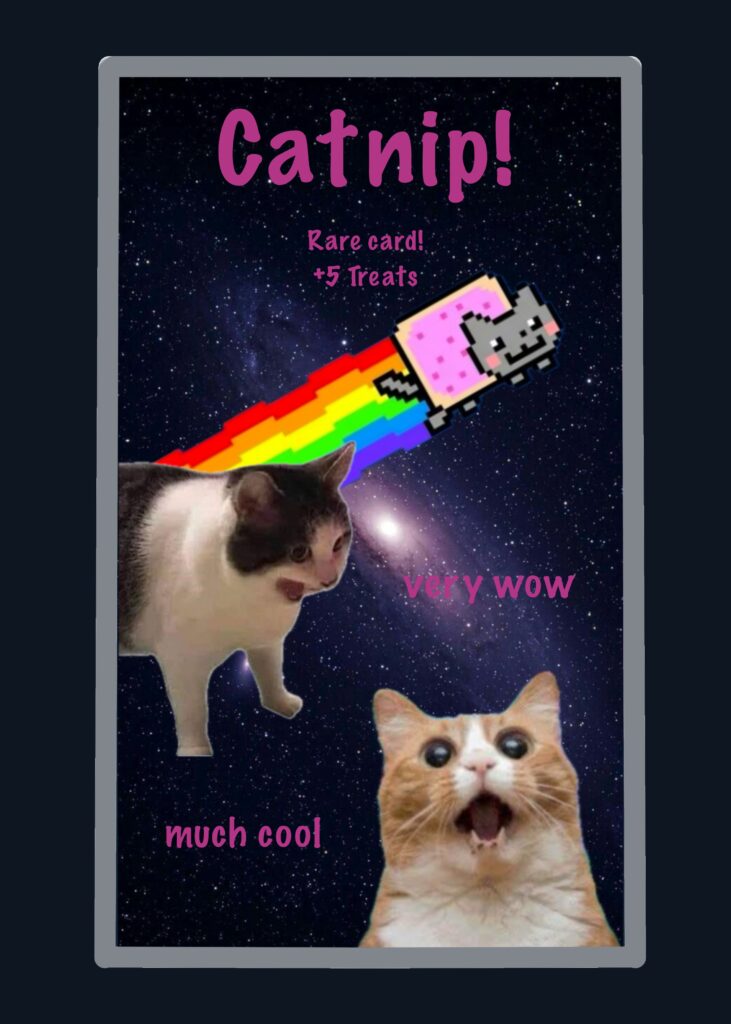
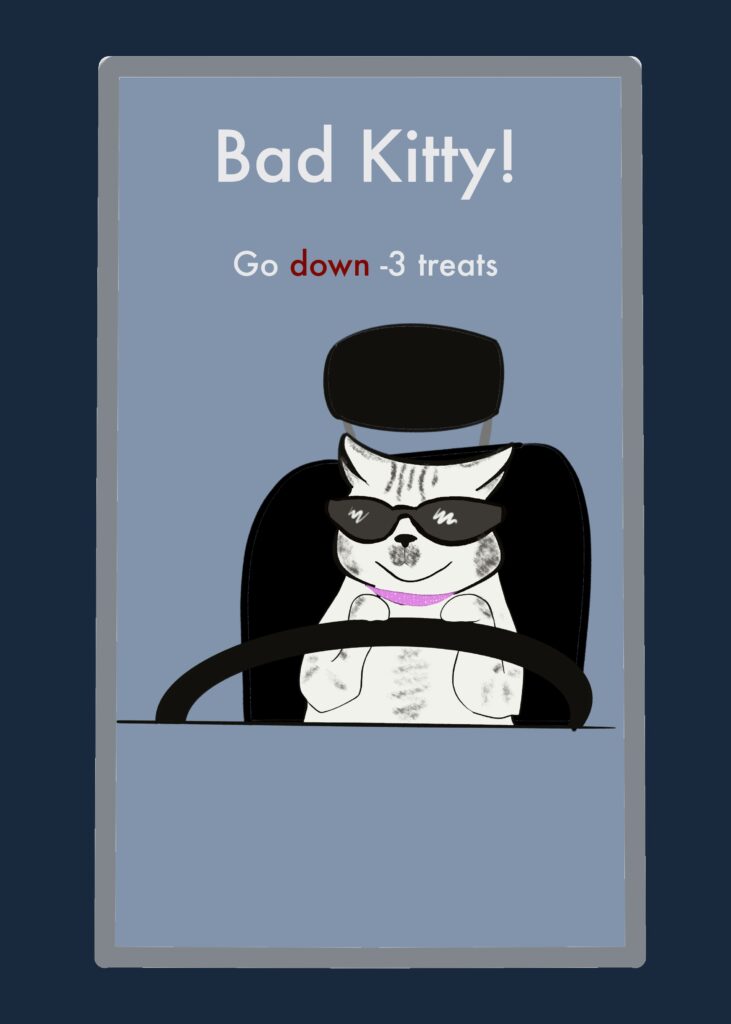
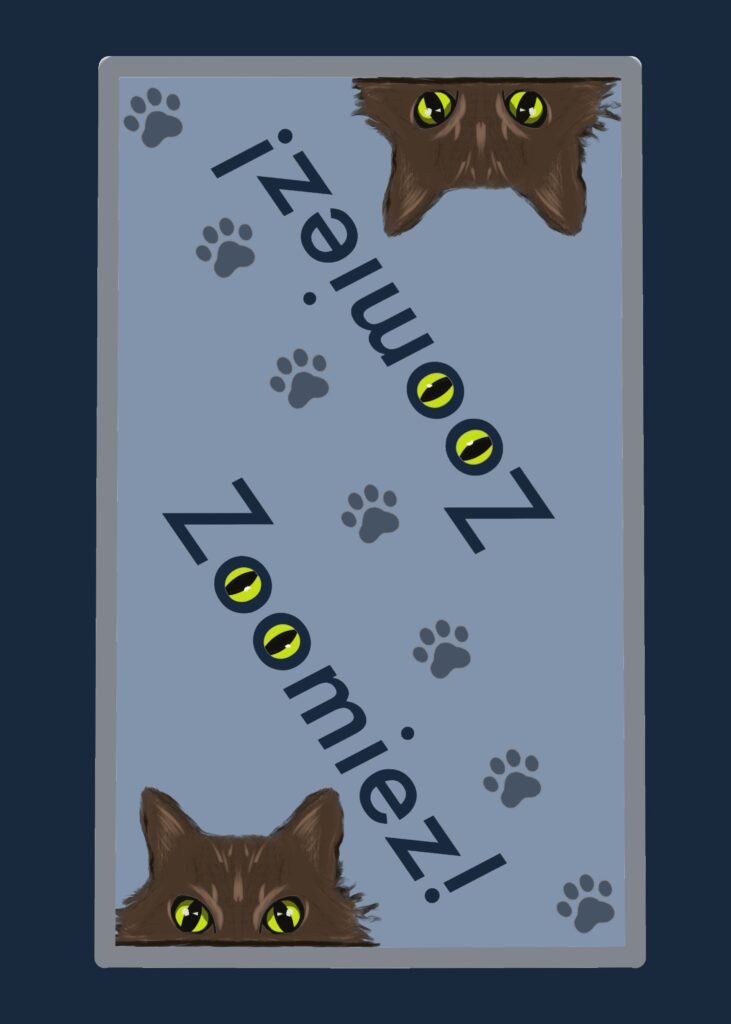


design courses, syllabi, schedules, resources and policies
Describe the best game you’ve made this semester in 200 words? Follow Michelle Nephew’s advice.
The best game I’ve made this semester is Skater Skirmish. Compared to my other games, this game stands out as the most complete. While some of my other games struggled to progress beyond the first prototype phase due to playability issues, Skater Skirmish managed to overcome these challenges. The concept was easy with players, and their responses encouraged me to refine it further.
What makes Skater Skirmish special is its accessibility. The gameplay is easy, making it enjoyable for people of all age groups who can move their hands. This inclusivity comes from its easy mechanics and simple rules, which ensures that anyone can learn and play the game. I prioritized simplicity because a more complicated design would have kept younger players or those unfamiliar with board games from playing.
To continue, Skater Skirmish blends fun and strategy with ease. Players are engaged in a game of classic skate, with just enough change to the game to make it interesting. It’s a game I’m proud of because it represents my growth as a designer and a carpenter. By focusing on player enjoyment, I created something that works with a wide audience.
Concept and Rule Set: Anansi the trickster
PROTOTYPE 1
• Theme: Inspired by Anansi, the trickster spider, with gameplay focused on outwitting opponents.
• Objective: Be the first player to discard all cards while using abilities and trick cards to sabotage others.
• Deck Composition:
• Number Cards: 30 cards across 3 suits (Trick, Trap, Action), numbered 1-10.
• Trick Cards: 40 cards with various actions (e.g., stealing cards, reversing turns, forcing draws).
• Wild Cards: 10 cards to match any suit or number.
• Character Cards: 10 unique trickster characters, each with special abilities.
• Turn Structure:
1. Play a card to match the top card on the discard pile by suit or number.
2. Play a Trick Card or Wild Card at any time.
3. Use character abilities at any time during a turn.
4. Draw a card if no playable options exist.
• Winning: First player to discard all cards wins.
Question Set 2
Counterfeit Couture is a competitive game about buying and selling fashion items of hidden value at high-stake auctions. The goal of the game is to end with the highest net value as you win expensive pieces and sell off less valuable pieces. From bluffing to bidding, invest in your fashion collection and watch your net worth grow! The game is intended for ages 8+, with 3-6 players, and a game experience of about 45-90 minutes.
o what is the difference between a game designer and a game developer?
A game developer carries out the game designers plans for the game. The developer codes, and makes the mechanics while the designer creates the metaphor for the game
o what commonly occurs during the game development process?
play tests, trial and error, revisions
o what are the challenges of balancing a game?
Trying to make the game fun to play and winnable but not impossible to figure out and get to the end goal
o what 10 maxims should you follow when writing rules?
1. Use no intermediary terminology
2. Use real words
3. Make no more work than necessary
4. Add flavor (but not too much)
5. Make your text no smarter than your reader
6. Discard rules that can’t be written
7. Take a breath
8. Go easy on the eyes
9. Get your final version play tested
10. Fix it in the FAQ
o how has play testing changed your game?
It has changed the specific details in the rules so people don’t outsmart the game and get more points
o who from class would you like to play test your next game or version 2 of your first game?
Tori because i know shes honest and she has good ideas
o who is the audience for your game?
Families
o who should play test your game outside of class?
A family with kids
they didn’t have many, really only how you can make your salads with the different colors. also when you can use the action cards and what exactly you do.
each section took like 5 minutes to learn so they learned pretty fast.
using the action cards and building their salads.
how to build salads. if you can mix salads colors and how certain cards behave in salads
the action cards.
stealing peoples cards.
grasping the build phase.
What was the most frustrating moment or aspect of what you just played?
I wasn’t really frustrated by anything in the game, for e it ran smoothly and was very fun.
What was your favorite moment or aspect of what you just played?
i loved to spin the spinner and the beautiful art was nice to look at.
Was there anything you wanted to do that you couldn’t?
their isn’t anything that i feel i wanted to do different or wanted to do that i couldn’t.
If you had a magic wand to wave, and you could change, add, or remove anything from the experience, what would it be?
i don’t think their is anything that needs added, a fun thing could be somethings that can make you skip a turn meaning your not able to pick any cards or move at all.
What should be improved with the next version?
maybe more events, not cards just more different occurrences.
Describe the game in 3 words?
cute, grim, demure.
colins texting game review
What was the most frustrating moment or aspect of what you just played?
i wasn’t frustrated, only by typing slowly lol.
What was your favorite moment or aspect of what you just played?
being able to use my phone so i was at least a little familiar with my keyboard layout.
Was there anything you wanted to do that you couldn’t?
no their wasn’t all the rules and safeguards were perfect.
If you had a magic wand to wave, and you could change, add, or remove anything from the experience, what would it be?
i wouldn’t want to change anything.
What should be improved with the next version?
nothing
Describe the game in 3 words?
silly, quick, fun.
Process for making chocolate covered strawberries
ingredients-

